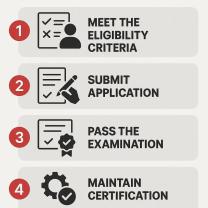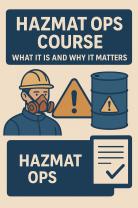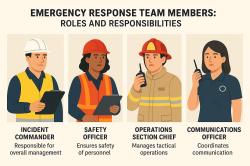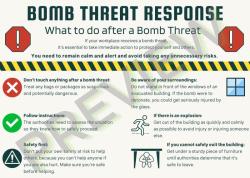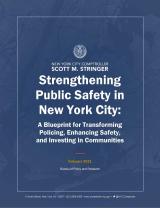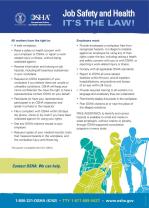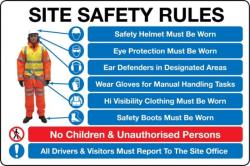How safe are New York?
Assessing the safety of New York State, or any location, involves considering various factors such as crime rates, public health, and environmental conditions. It's important to note that safety can be subjective and may vary across different areas within the state. Here are some key aspects to consider:
Crime Rates:
Overall Crime Rates: Different regions in New York State may have varying crime rates. You can check crime statistics provided by local law enforcement agencies or websites like NeighborhoodScout or City-Data to get an idea of crime levels in specific areas.
Types of Crimes: Assess the types of crimes prevalent in an area, including violent crimes, property crimes, and other offenses. Some areas may have higher rates of specific crimes than others.
Public Health and Healthcare:
Healthcare Infrastructure: Evaluate the quality and accessibility of healthcare facilities in the region. Adequate healthcare resources contribute to public safety by addressing medical emergencies and overall community health.
Public Health Data: Review public health data, including disease rates, vaccination coverage, and the effectiveness of public health programs. Local health departments and state health agencies provide relevant information.
Environmental Safety:
Natural Disasters: Consider the susceptibility of an area to natural disasters such as hurricanes, floods, or earthquakes. New York State, for example, may face risks associated with severe weather events.
Environmental Hazards: Assess the presence of environmental hazards such as air and water pollution. The New York State Department of Environmental Conservation provides information on environmental issues.
Traffic Safety:
Road Safety: Evaluate traffic safety and accident rates in the area. High-quality road infrastructure, effective traffic management, and public awareness campaigns contribute to safer road conditions.
Public Transportation Safety: Assess the safety of public transportation systems, including buses and trains, if applicable. This can be important for urban areas like New York City.
Emergency Services:
Response Time: Consider the efficiency of emergency services, including police, fire, and medical response times. Quicker response times can contribute to better outcomes in emergencies.
Community Preparedness: Evaluate community preparedness for emergencies and disasters. Communities with effective emergency management plans tend to be safer during crises.
Community Engagement:
- Community Programs: Explore the presence of community programs and initiatives focused on safety, crime prevention, and community engagement. Active community involvement can contribute to a safer environment.
Educational Institutions:
- School Safety: Assess the safety measures in place at educational institutions. Safe learning environments contribute to overall community well-being.
It's crucial to use a combination of official statistics, government reports, and local insights to form a comprehensive understanding of safety levels in specific areas within New York State. Additionally, individual perceptions of safety can vary, so talking to local residents and community members can provide valuable insights into the safety climate of a particular area. Keep in mind that safety is a dynamic and multifaceted concept that may change over time due to various factors.
Navigating New York Safely: A Comprehensive Guide
While media portrayals might paint a different picture, New York City is actually one of the safest big cities in the world. However, navigating any urban environment requires awareness and personal safety measures. Here's a breakdown:
1. Safety Measures and Statistics:
- Overall Crime Rate: New York City's overall crime rate has been steadily declining for decades, reaching historic lows in 2023. The violent crime rate (murder, rape, robbery, assault) is lower than the national average.
- Safety Initiatives: The city implements numerous safety measures, including increased police presence, security cameras, improved lighting, and community outreach programs.
- Neighborhood Differences: Crime rates vary across different neighborhoods. Crime mapping tools like NYC OpenData and the NYPD Crime Map allow you to research specific areas.
2. Safer Neighborhoods and Areas:
- Lower Manhattan: Financial District, Tribeca, Battery Park City
- Midtown Manhattan: Murray Hill, Chelsea, Gramercy Park
- Upper Manhattan: Central Park South, Lincoln Square, Riverdale
- Brooklyn: Brooklyn Heights, Park Slope, Cobble Hill
- Queens: Forest Hills, Long Island City, Astoria
3. Crime Rates and Safety Precautions:
- Common Crimes: Petty theft, pickpocketing, scams, public disturbances are more prevalent than violent crimes.
- Precautions: Stay vigilant in crowded areas, avoid displaying valuables, be aware of your surroundings, trust your instincts, and utilize well-lit streets.
- Emergency Numbers: Dial 911 for police or medical emergencies, 311 for non-emergency city services.
4. Safety Initiatives and Community Programs:
- Neighborhood Watch Programs: Residents actively monitor their communities and report suspicious activity.
- Safe Zone Initiatives: Businesses provide safe havens for people in need.
- Youth Programs: Engaging at-risk youth in positive activities reduces crime and fosters community engagement.
5. Personal Safety Tips in New York:
- Plan your trip: Research your itinerary and destinations beforehand, understand transportation options.
- Be aware of your surroundings: Stay alert, avoid distractions like headphones, and trust your gut feeling.
- Use safe transportation: Utilize well-lit and populated areas at night, consider taxis or ride-sharing apps.
- Keep valuables secure: Don't display expensive items, carry your bag close to your body, avoid backpacks in crowded areas.
- Know your resources: Download NYPD safety apps, locate police precincts, familiarize yourself with emergency numbers.
Remember, personal safety is a shared responsibility. By practicing awareness, utilizing city resources, and contributing to community initiatives, New York City can remain a safe and vibrant place for everyone.
Enjoy your New York adventure!


